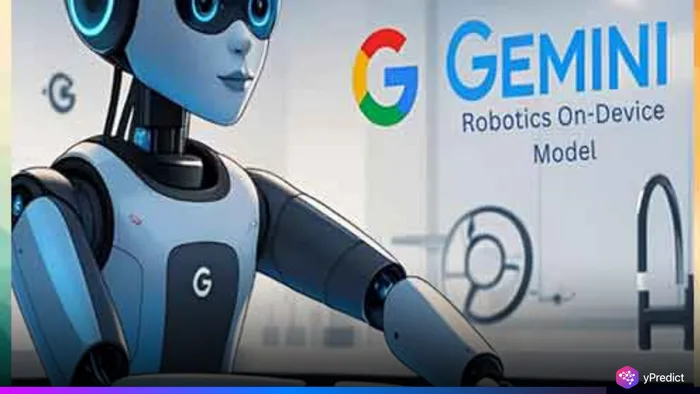
In a big step for cloud-free robotics, Google DeepMind has formally launched Gemini Robotics On-Device, a lightweight but very powerful large language model (LLM) that allows robots to operate completely offline. The model provides real-time performance, more reliability, and very strong data privacy for robots operating in areas with restricted and/or no internet access.
This is especially timely, as low-latency and autonomous robotics are rapidly becoming a necessity across many industries, including manufacturing and healthcare.
Cloud-Level Intelligence Without the Cloud
Gemini Robotics On-Device is a breakthrough in AI, enabling cloud-level intelligence to run directly on low-power robots without needing internet access. Unlike traditional models reliant on cloud servers, Gemini can understand natural language, follow voice commands, plan multi-step tasks, and perform delicate actions like folding laundry or assembling parts.
Google has showcased its capabilities on various robots, including the Franka FR3, ALOHA arms, and Apollo humanoid, where they successfully responded to spoken instructions and handled unfamiliar objects all processed locally with cloud-like precision.
Gemini Robotics SDK Now Available
To boost adoption of its offline AI model, Google has launched the Gemini Robotics On-Device SDK, enabling developers to integrate Gemini with compatible hardware, create autonomous robot behaviors, and build edge-AI applications for mobile and industrial use. This empowers innovation beyond the cloud where speed, privacy, and autonomy are essential.
Competition Heats Up in Offline Robotics AI
The launch of Gemini marks a big moment in the robotics race, with tech innovators like NVIDIA and Hugging Face also advancing AI for autonomous systems.Gemini is designed for offline-first, so long as the model is implemented on a device processor with enough capacity for it and its uses, it allows for interaction at the edge, and thus, real-time decision-making.
The edge specification makes these systems more privacy centric, faster, and reliable due to having more limited edges to operate from. A major benefit in deploying a model with low latency, privacy, speed reliability and independence are hyper-critical elements of operations within warehouse settings, hospitals, home life trackers, scapegoating aural memory responses for person-centered models for quick direction preferences, or disaster zones and other environments.
Conclusion
Gemini Robotics On-Device is a significant advancement in robotics the ability for an AI-powered robot to work without the cloud was a key landmark. This evolution towards edge AI means that robots can now make decisions and view processed data locally, thereby increasing security, speed, and reliability in jurisdictions and use-cases constrained by privacy or internet access.
As Google’s SDK begins to gain traction and competitors try to catch up, Gemini lays the groundwork for a future where autonomous robots operate more practically, think in real time, and work closer to the context they are actually needed.






